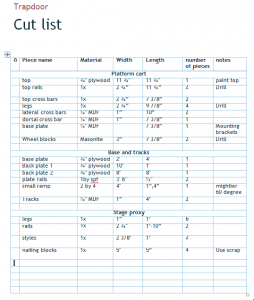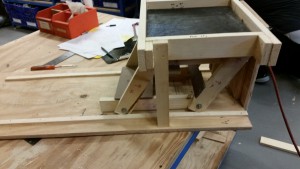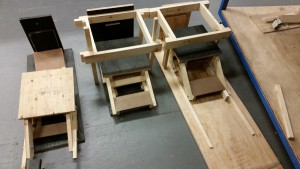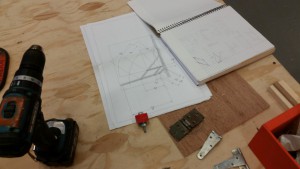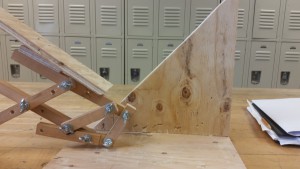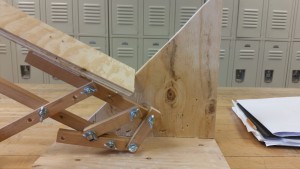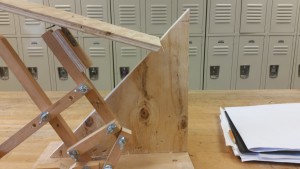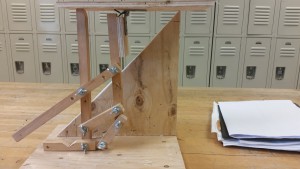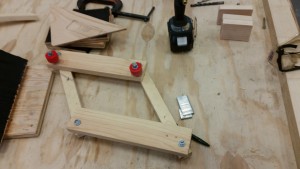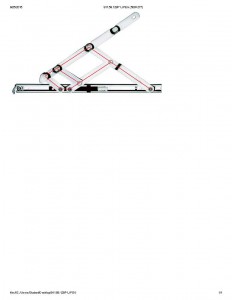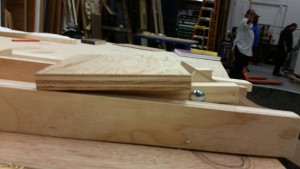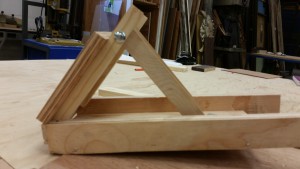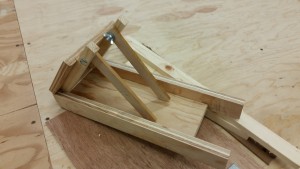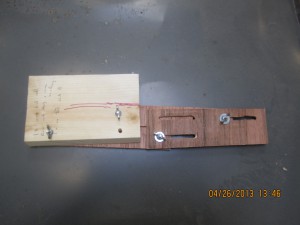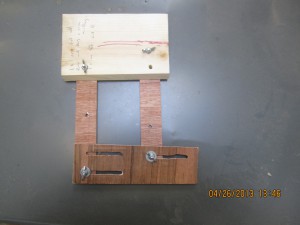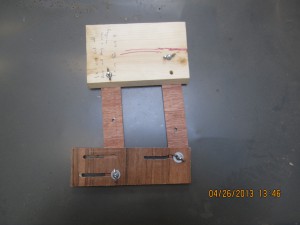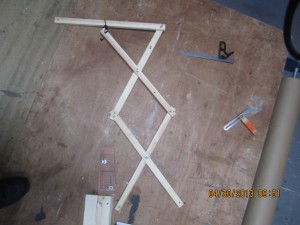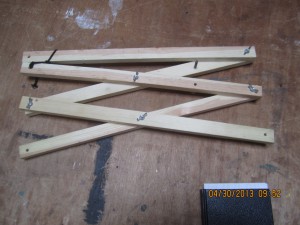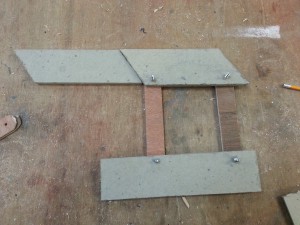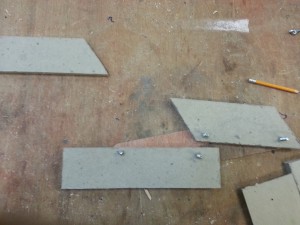I completed the proof of concept and I have constructed a cleaner model for presentation purposes.
The unevenness of lumber is still an issue that caused the track to get narrower towards the back of the track and minor modifications were needed to get the model to work consistently. The legs should be offset from the edge enough to account for the most extreme angles of the transition.
In the future I will try a using an absolute reference point to minimize the impact of the cumulative inaccuracies in relative measurements
Starting from the left model: prototype, proof of concept, and the presentation model.

